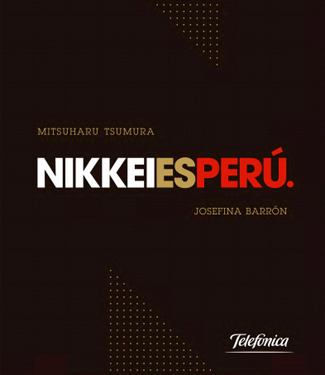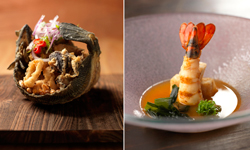Sacrilege. It wouldn’t have been a bad title for this book. What other word could be used to describe miso soup with scallions and chili or palm hearts, smoked pork and a rough and spicy cocona sauce masquerading as nigiri? The great itamae of Japan would mutter and shudder; sacrilege, madness perhaps.
This then is the story of madness, of the most inspired and delicious sort. Chef Mitsuharu Tsumura is one of Peru’s golden boys and his restaurant, Maido, has been acknowledged as among the continent’s best. Along with the literary talents of Josefina Barrón and a trio of talented local photographers, he has released his first book, Nikkei es Peru, tracing the origins of Nikkei cuisine (the fusion of Japanese and Peruvian cuisine) and included a selection of 45 recipes from Maido.
Mitsuharu’s book marks a moment in Peruvian culinary history: it captures the coming of age of a new cuisine that was stewed for generations, born just 50 years ago, and is now stepping up to honor a legacy and create a future. What happened in Peru as generations of Japanese integrated into the society is unique in the world.
One great culinary history met another, equally strong willed although completely different. Quiet precision and respect met color, chili, and lightheartedness and instead of retreating to their individual enclaves, they did the unexpected, they fused. A fusion that, as the brothers Adria put it in their introduction, is not a simple fad. It is a sensitive interpretation of one culture through another, an authentic blending of the roots of two cuisines by chefs who have mastered both and have the audacity, creativity, and sense of humor to finesse this unexpected union.
Josefina Barrón narrates an excellently researched investigation into the origins of Nikkei and takes the reader from an initial culture shock all the way through to a near complete integration. Nipponese touches can be seen everywhere from the short lime marination of the ceviche to the spicing of the ultimate Peruvian take-away, pollo a la brasa.
Nikkei, however, is not really about integration; it is a fledgling cuisine still finding its way, with only a few serious chefs, of which Mitsuharu is undoubtedly one of the principals, working to define it. With no traditions to set boundaries and two rich culinary cultures for inspiration, this is one of the liveliest cuisines in the world today.
Barrón introduces you to all the characters of the short history of Nikkei – Minoru Kunigami who started it all at La Buena Muerte, Rosita Yimura who invented the pulpo al olivo, the legendary Humberto Sato, the masterful Toshiro Konishi – and essentially provides a hit-list of restaurants to visit in Lima.
Mitsuharu’s recipes, beautifully photographed, are the highlight. They perfectly match this brilliant young chef’s personality: playful, intelligent, sincere, and innovative; and they are all accessible to the average home cook with a decent stash of Japanese essentials and a good fish market nearby. Look out for a Nikkei ceviche with dashi, ponzu, garlic, ginger; sea urchin roe with oka and chili; and scallops in a maka sauce.
This is one of those rare cookbooks that draws you in, tempts you to tuck into a soup and lap it up cover to cover in an afternoon. Make sure to have some raw fish in the fridge, maybe some chili, some dashi, just in case – Mitsuharu tends to inspire.
For now, the book is unavailable outside of Peru, but a digital version can be downloaded free here.



![Making Mealtime Matter with La Familia: Easy Sofrito [Video]](https://thelatinkitchen.com/wp-content/uploads/2015/10/sofrito-shutterstock__0-500x383.jpg)
![Easy Latin Smoothies: Goji Berry Smoothie [Video]](https://thelatinkitchen.com/wp-content/uploads/2015/12/goji_berry-shutterstock_-500x383.jpg)
















![Fun and Fast Recipes: Fiesta Cabbage Salad [Video]](https://thelatinkitchen.com/wp-content/uploads/2015/11/fiesta_cabbage_slaw-shutterstock_-500x383.jpg)









